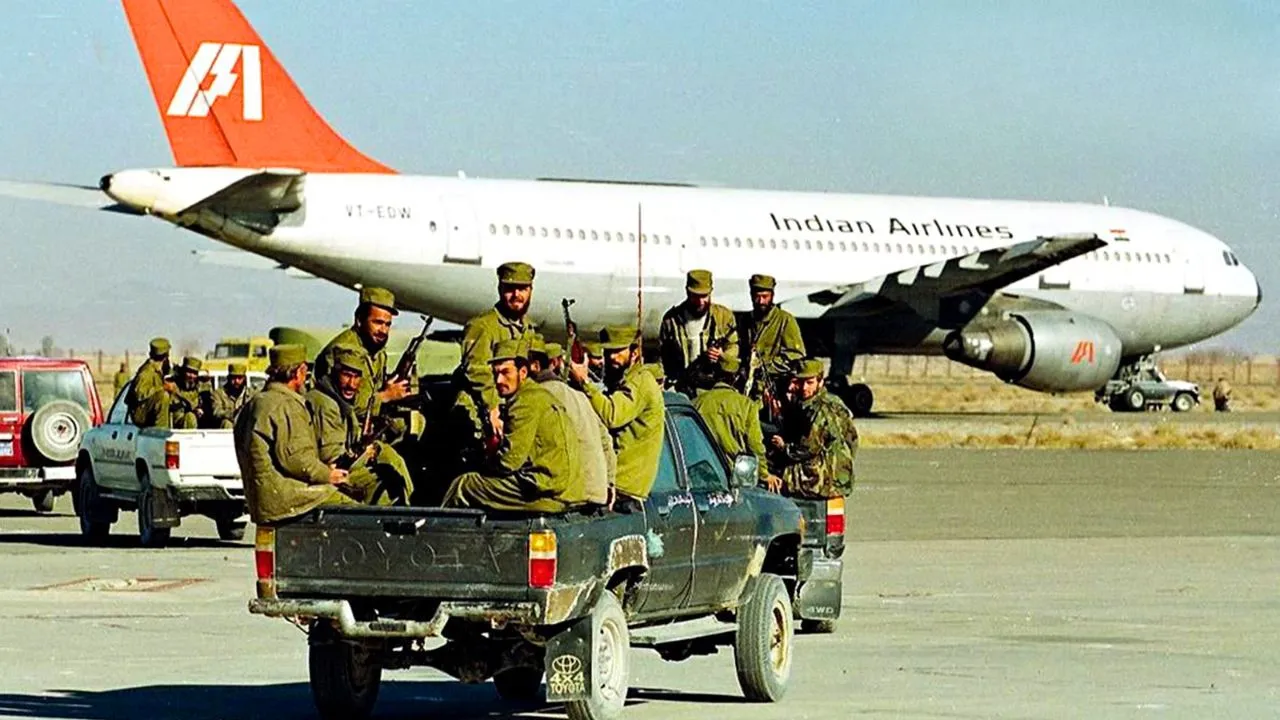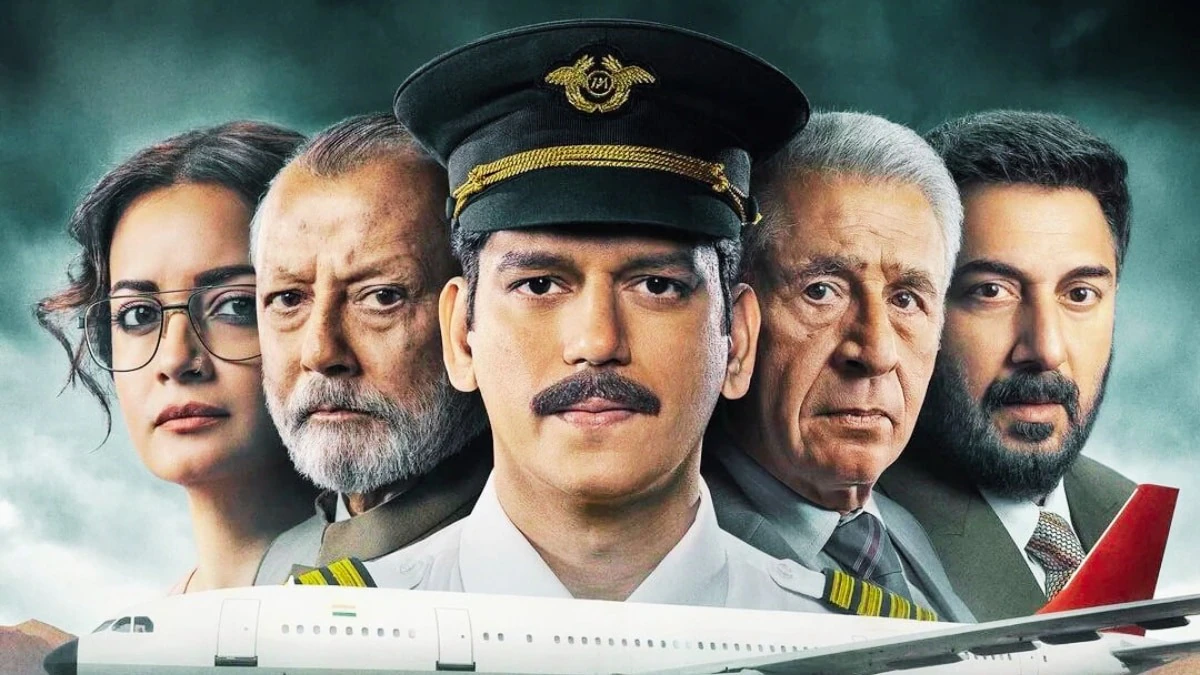IC 814 Kandahar Hijacking Case – A Biggest Traumatic Episode in the History of India
Do You Know What the IC 814 Kandahar Hijacking case is?
The hijacking of IC 814 over Kandahar remains one of the biggest and most traumatic episodes in the recent history of India. The event etched itself into the collective memory of the nation for everything from the audacity of the act to the geopolitical implications that the event had. With the event gaining further attention through Netflix documentaries and dramatizations, a summary of what occurred during those fateful days back in December 1999, how it was handled, and what happened to those individuals who were connected to it is necessary.

Incident: What Happened?
On December 24, 1999, Indian Airlines Flight IC 814-an Airbus A300-was flying from Tribhuvan International Airport in Kathmandu, Nepal, to Indira Gandhi International Airport in Delhi, India. It was a routine flight, one that many had taken without a second thought. But as the aircraft entered Indian airspace, five heavily armed hijackers stormed the cockpit and took control of the plane.
The hijackers, who were later identified as members of the Pakistan-based militant group Harkat-ul-Mujahideen, first ordered the plane to go to various places like Amritsar, Lahore, and Dubai before making its final stop in Kandahar in Afghanistan, then controlled by the Taliban. The militants had several demands, including the release of 36 militants held in Indian prisons, a fabulous sum of $200 million, and the return of the body of a fellow militant.
Hostage Situation
Once the aircraft had landed in Kandahar, the passengers were effectively at the hijackers’ mercy. The Taliban-who then controlled Kandahar-surrounded the aircraft, saying they were preventing the hijackers from harming the hostages. However, the exact relationship between them and the hijackers is not clear, and exactly what role the Taliban played in this crisis is still debated.
The Indian government, headed by Prime Minister Atal Bihari Vajpayee at that time, was faced with an extremely tough decision. There were 176 passengers and crew members on board the aircraft in total. Soon, the hijackers began issuing their demands, and the Indian government waded deep into a diplomatic and strategic nightmare. This crisis, however, was further complicated by the fact that under the Taliban, Afghanistan enjoyed little diplomatic recognition, and therefore limited avenues for negotiation remained.
Negotiations and Aftermath
Negotiations were taut and slow, the hijackers demanding initially that 36 militants be freed. However, the Indian government managed to get this number down to three: Maulana Masood Azhar, Mushtaq Ahmed Zargar, and Ahmed Omar Saeed Sheikh-three extremely notorious terrorists whose release was later attributed as the reason for Masood Azhar founding the terrorist group Jaish-e-Mohammed, responsible for many attacks in India, including the 2001 Indian Parliament attack and the 2019 Pulwama attack.
It finally released the hostages on December 31, 1999, after seven days of nonstop negotiations. The Indian government flew the three militants to Kandahar in exchange for the hostages. The hijackers escaped, and despite India’s all-out efforts, they were never caught.
The decision to free the militants saw a divided reaction in India. On one hand, the government was hailed for managing to get the hostages released without further bloodshed. On the other hand, the decision was berated as an act of capitulation to terrorists, setting a very dangerous precedent.
The Hijackers: Where Are They Now?
Of the five hijackers-Shakir, Shahid Akhtar, Sunny Ahmed Qazi, Ibrahim Athar, and Yusuf Azhar all remain at large today. With Interpol notices and exhaustive efforts by Indian authorities, they have managed to evade capture. This continued freedom is a grim reminder of the unresolved nature of the IC 814 incident.
Netflix’s Contribution to highlight the past
In the recent past, Netflix has indeed been playing an important role in bringing the IC 814 Kandahar hijacking case into common public memory. The steaming giant tries to bring forth all the complexities of the event before the audience with its documentaries and dramatized series, which either were not known or have been overtaken by other distracting events.
Documentaries like Hijack: The IC 814 Crisis provide a lot of insight into the hijacking incident, the negotiations involved, and the aftermath. The interviews with key players, which include government officials, security experts, and even survivors, are used in this documentary to weave a comprehensive tapestry of the happenings during those harrowing days.
The Netflix account of the event renewed interest in the case, especially among people to whom the event was not even widely known due to their young age. The worldwide audience has taken this story to people who may have been previously unaware of it and has put into perspective the global significance of this hijacking in counterterrorism efforts.

The Objection by the Indian Government over Netflix Documentary
While the documentary on Netflix about the IC 814 Kandahar hijacking received a lot of attention, it is receiving criticism, especially from the Indian government. Government objections are to the actual events and their portrayal in the documentary, which they claimed were full of mistakes and misrepresentations.
The government also objects to how the decision-making aspect on the part of the Indian authorities is represented in the documentary during the time of crisis. It pointed towards indecisiveness on the part of the Indian government and ill-preparation, which led to a late response that could have worsened it. Indian officials termed it misleading and unfair since their decisions were made in a complex, high-pressure environment.
There was also concern about how the negotiations with the Taliban were portrayed in the documentary. The impression the documentary gives is that the Indian negotiators were more at the mercy of the Taliban for their assistance, placing Taliban in a rather more light-gray color than many believe is warranted. Critics say this waters down the complicity of the Taliban in enabling the hijackers and trivializing the gravity of the situation.
Another important issue is the release of the three militants in the documentary. The government has shown its dismay over how this was framed in the documentary, stating that it does not bring out the seriousness of releasing dangerous terrorists such as Masood Azhar, who then engaged in further attacks against India. The manner in which the documentary has treated this aspect is found wanting in bringing about the proper context to appreciate the consequences of that decision.
The Indian government, therefore, pointed out a host of factual inaccuracies in the documentary-from incorrect timelines to inconsistencies regarding what happened on the ground. These chinks, they point out, contribute to a narrative not quite fully aligned with the reality of what happened during the hijacking and its aftermath.
These objections have led some to call on Netflix to edit the documentary or add warnings to indicate that certain parts are dramatized or speculative. For its part, however, as of this moment, the documentary remains available through the service without major alterations.
Current Status and Ongoing Repercussions
While the immediate crisis of the IC 814 Kandahar hijacking was resolved, its reverberations are still being felt. The release of Masood Azhar has had much wider implications for India’s national security. Azish-E-Mohammed under his command has been involved with most terrorist attacks in India hence keeping India and Pakistan in a never-ending state of tension.
The incident, therefore, had a chilling relationship between India and Afghanistan diplomatically, but also with Pakistan, which was accused of providing all the logistic support, and hosting the hijackers. These tensions go on to influence geopolitical dynamics in this region.
It also brought about sweeping changes in aviation security in India. The attack showed many loopholes in the system, and thus it led to the tightening of security at all airports with stringent screening of passengers and the posting of armed sky marshals on flights.
But despite all those measures, the fact that the hijackers and the masterminds in the IC 814 case remain at large is a source of frustration and headache for India. The closure that never was possible also speaks to the difficulty posed by counterterrorism in an interdependent world.
The IC 814 Kandahar hijacking remains a dark phase in the history of India, which still haunts it now, after a lapse of over two decades. While hostages were eventually released, the release of hardened terrorists and the spurt in militancy thereafter speaks volumes about such crises, which are complex and often tragic.
The revisit of Netflix to the event brings it afresh into public interest with new insights and perspectives on what happened during those tense days in December 1999. However, the objection from the Indian government to the documentary serves as a reminder that narrating such an important story carries along with it the responsibility of accuracy in its representation and sensitivity to the looming complexities.
As we revisit this case, it is imperative that the memories of that experience do not fade away and that efforts at seeking justice against the perpetrators of that dastardly act are pursued relentlessly. The IC 814 incident serves as a grim reminder of the dangers posed by terrorism and the need for eternal vigilance. The difficult options that the government faced in responding to such challenges, and how those options can have long-term implications on national security and international relations, also come out in bold relief.
The IC 814 Kandahar Hijacking was not a mere tale of terror and negotiation but one of endurance and steadfast struggle for peace and security in an unquiet world.
Post Comment